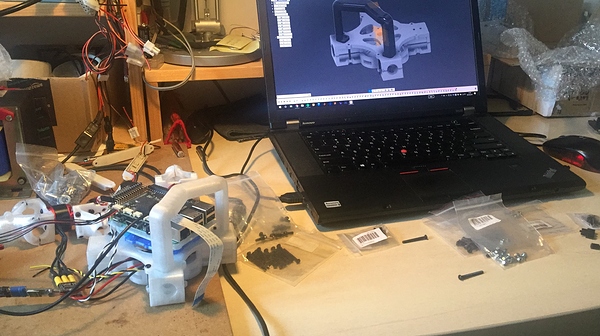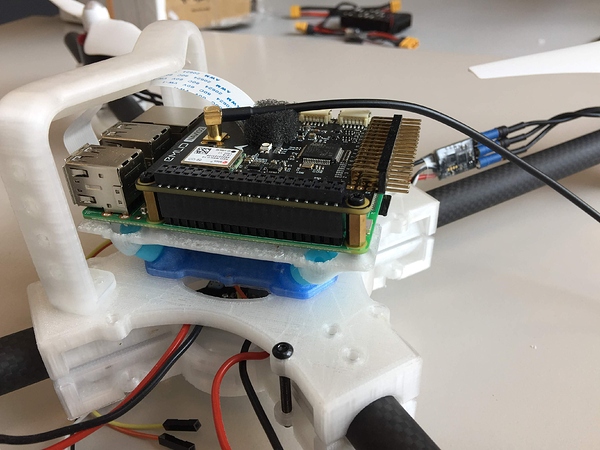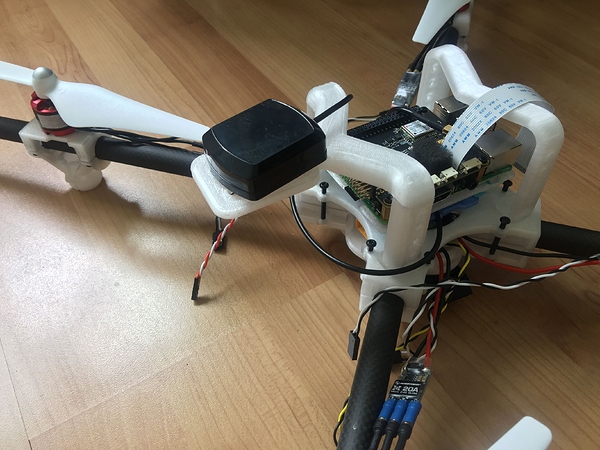Hi there,
This is to share my first drone build with Navio2.
Actually this is also my first post, I’m Pietro from Italy, with a Navio2 waiting to drive a drone.
I decided to build it from 4 carbon fiber pipes, connected with 3d printed parts I designed.
If anyone interested I will share the project, once finished.
Moreover, this is my very first build so if you have any advice do not hesitate.
The components are pretty standard:
- 920kv motors dji clones I guess
- 9450 dji clones propellers
- 20A hobbywing ESC with BLHeli
- a small PDB from Matek
- turnigy radio rx/tx
- 4s 5000mAh battery
At the beginning I wanted something quite small to fly indoor also, but ends up in a regular 450 class quadcopter.
Here are some random pictures, more to come…
dumping reduction platform provided by Emlid:
This is the GPS antenna mounted on his place. I plan to cut the wire as soon as a MCX connector comes (already ordered)
The radio will be mounted below the GPS antenna, it should not be a problem.
However, there are a lot of people mounting GPS antenna on a metallic sheet, why? is it really necessary?
As you can see the arms are quite long.
I plan to cut them and use the extra lenght to make the legs. They will be mounted under the motors, the mounting platform for the motors is already designed to hold the leg also
things left to do:
- legs
- LEDs, not sure if I will 3d-print something to hold it or just glue it to the arms
- camera holder, maybe I will design it with a micro-servo for tilt it during flight
- proper cable management
- connectivity, not sure if I will add a 4G modem or an external wifi antenna to boost the range of this thing.
Thank you.










